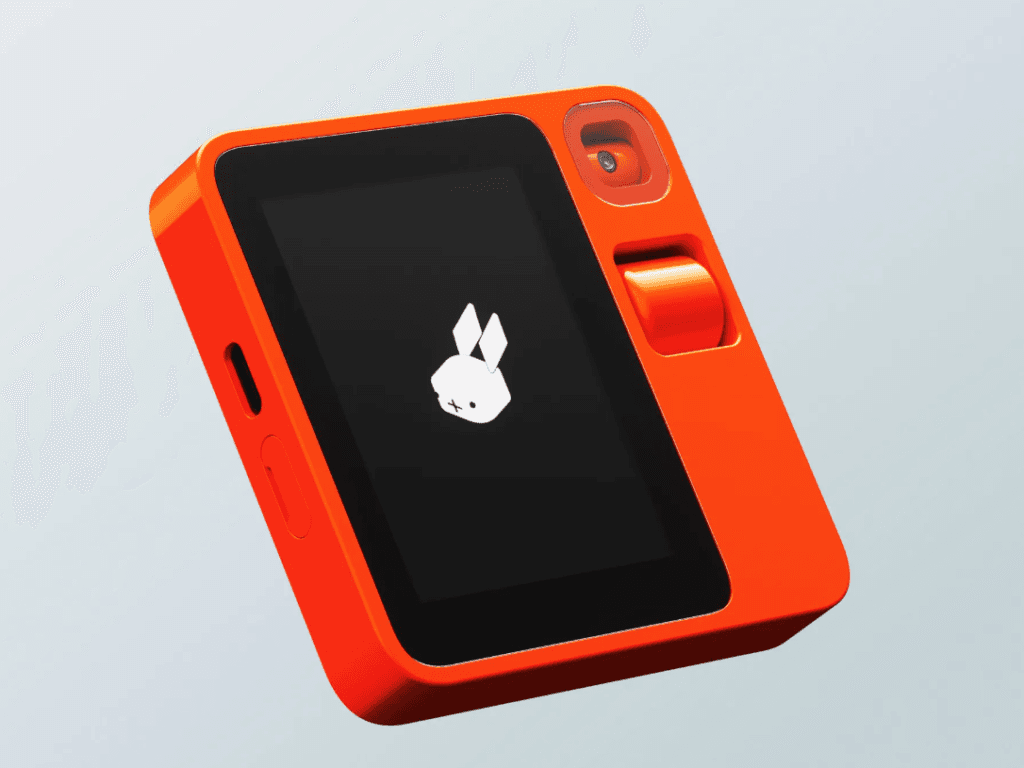The Rabbit R1, introduced at CES 2024, is an AI-powered personal assistant device designed to perform tasks such as web searches, media control, and service bookings through voice commands and touch interactions. Co-designed by Teenage Engineering, the R1 features a compact design with a 2.88-inch touchscreen, an 8 MP camera, and runs on Rabbit OS, based on Android 13. Priced at $199, it aims to integrate AI assistance into daily routines.
Key Features:
- Design and Hardware: The R1 boasts a 2.88-inch touchscreen, an 8 MP camera, and is powered by a 2.3 GHz MediaTek Helio P35 processor, with 4GB RAM and 128GB internal storage. It includes a push-to-talk button, scroll wheel, and various sensors like gyroscope and GPS. Connectivity options encompass Wi-Fi and cellular support via a SIM card slot.
- Software and Functionality: Operating on Rabbit OS, the device utilizes a Large Action Model (LAM) to execute tasks such as web searches, streaming music, and ordering services. It integrates AI models like Perplexity.ai to respond to user queries and commands. Recent updates have introduced features like “teach mode,” allowing users to train the AI for specific tasks, and customizable interfaces generated through AI prompts.
Market Performance and Reception:
Despite initial enthusiasm, the Rabbit R1 faced criticism regarding its functionality and performance. Early reviews highlighted limitations, with some questioning its advantages over existing smartphone capabilities. Security concerns also emerged, including issues with data storage and access vulnerabilities. In response, Rabbit Inc. has released multiple software updates to enhance performance, address security flaws, and expand features. As of August 2024, the company reported sales expansion to the UK and European Union, indicating ongoing efforts to improve and market the device.
In summary, the Rabbit R1 represents an ambitious attempt to integrate AI assistance into a standalone device. While it offers innovative features and design, its success depends on continued improvements in functionality, security, and user experience to distinguish itself in a competitive market.




